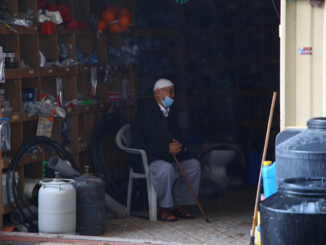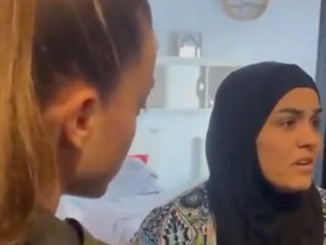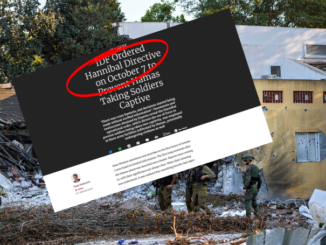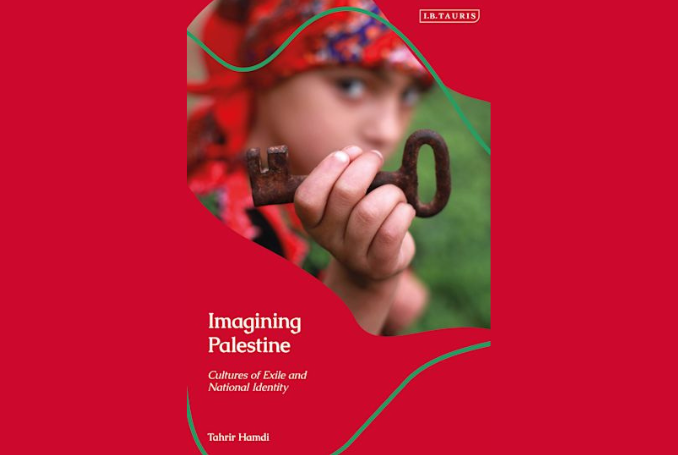
By Benay Blend
(Imagining Palestine: Cultures of Exile and National Identity, by Tahrir Hamdi, I.B. Tauris, 2022)
“The words ‘imagining Palestine,’” writes Tahrir Hamdi, do not refer to a Palestinian people who never existed, but “to people who indeed existed historically and concretely on this land” (2023, p. 2). Thus, Hamdi encapsulates the thesis of her book. Drawing from a wide variety of sources—decolonial studies, critical theory, literary analysis, and interviews with prominent activists/scholars—Hamdi constructs a decolonized, ongoing portrait of Palestine, a process that she believes is necessary before return.
Daughter of Khalil Hamdi, one of the founders of the Arab Nationalist Movement (ANM), Hamdi relies on a theory “grounded in the very real suffering of the people” (p. 30) who are living at the margins of society. The intellectuals included here also act in what Hamdi calls a “thirdspace” (p. 29) that undergoes transformation into a center of resistance and sumud.
How to imagine a country that does not exist on the world map today is not an easy project. Hamdi accomplishes this task with the help of various Palestinian and other intellectuals, including Edward Said, Ghassan Kanafani, Naji Al Ali, Mahmoud Darwish, Ramzy Baroud, Mourid Barghouti, Radwa Ashour, Suheir Hammad, and Susan Abulhawa, among several others.
All of these perspectives, Hamdi believes, “contribute to not only imagining Palestine, but realizing an actual Palestine” (p. 4), thereby bringing to a close the Zionist project. What unites these perceptions is a “sense of restlessness” combined with a “refusal to surrender” (p. 15), both inside and existing in exile outside of areas under occupation.
In the absence of geographic territory, what brings all Palestinians together, whether in exile or under occupation, is the Nakba (catastrophe) of 1948, an event that remains ongoing as long as the Zionist regime continues its project of ethnic cleansing. Imagining Palestine, then, is also an “ongoing process” (p. 14), an effort at “constructing/reconstructing a collective, inclusive, national and cultural identity” (p. 14) that Hamdi follows throughout the text.
Chapter 1, entitled “The Restless Spirit: Palestine Theorized,” follows the works of post-1948 theoreticians, including Edward Said and Ghassan Kanafani. What Ramzy Baroud calls “engaged” (Our Vision for Liberation: Engaged Palestinian Leaders and Intellectuals Speak Out, 2022) or “organic” (These Chains will Be Broken: Palestinian Stories of Struggle and Defiance in Israeli Prisons, 2020) intellectuals, these writers have several themes in common. All adhere to the theory that it is predominantly about the “real world” rather than “theoretical abstractions,” and for all included here the “real world is about the oppressed.” (p. 28).
For these reasons, all write from the margins, an inclusive space that those who stand in solidarity with the oppressed and are willing to give up their privileged positions can enter (p. 31). This point is crucial because too many times those in the solidarity seek to pose their own opinions, particularly regarding strategy and ideology, on those who are on the frontlines of struggle.
“Speaking from the center,” Hamdi writes, “means speaking from within the ideology and political platform of the hegemonic power and playing by their rules,” which leads to disempowering the voices of resistance that would lead to “true liberation of the oppressed” (p. 31). This argument is particularly important in contemporary movements because too often the liberal left seeks to impose its own preferences for nonviolent resistance along with its aversion to nationalist movements, not understanding the difference between nationalist movements as liberation ideology as opposed to nationalism as a movement of the right.
Chapter 2, “‘Exile is the World Inside’: The Poetry of Resistance and Solidarity,” focuses on selected works of poetry by Palestinian, Arab, and international poets such as Darwish, Mourid Barghouti, June Jordan, Suheir Hammad, John Trudell and Lee Maracle. It is here that Native poets exhibit true solidarity by entering the thirdspace of the oppressed.
“If the aim of siege and besiegement is to silence, exterminate and break the will of a people,” explains Hamdi, “then international solidarity is of utmost importance to break the silence and expose the brutal apartheid tactics of Israel” (p. 75).
Moreover, Native American solidarity with the Palestine cause benefits the former by bringing Native resistance out of the past, where many choose to view it, into the present where, like the struggle of the Palestinians, it continues to be relevant today.
“It is not only the theorizing and narrating that is important,” Hamdi continues, “but also their performativity” (p. 98), a concept that again is related to Baroud’s notion of the “engaged intellectual.” Allying themselves with the Palestinian cause, Native Americans draw on the strength of the Palestinian struggle against the “so-called permanence” of the Zionist regime. Their solidarity, Hamdi notes, comes from a desire to endow their own movement with the “kind of living agency that a living cause of the present” (p. 98) bestows, but it also stems from recognition that both are fighting an ongoing settler colonial presence on their land.
Focusing on memoir and fiction, chapter 3, “Writing Self, Writing Nation in the Memoir and Novel,” chronicles the urgency of writing the self within the larger framework of national identity. Although she stresses the moral right of return, Hamdi believes that it is first necessary to imagine what that country will look like after the Zionist regime is gone.
In Hamdi’s view, narratives that recoup the past are particularly important for “the sake of preserving memory against forgetfulness,” especially since the Zionist regime has practiced cleansing of “the history culture and the very existence (past and present)” (p. 115) of the people. While all of the narratives claim the Nakba as the defining moment in the shaping of present lives, they also “reclaim and reconfigure a future Palestine” (116) to which the exiled will return.
Chapter 4, “Writings on the Wall,” is perhaps the most creative section of the book. It goes beyond recognition of the Palestinian cause in “official circles” (p. 24) to look at writings and drawings on various refugee camp walls, apartheid walls, and walls that are meant to keep the dispossessed in a specific place. It is in this thirdspace that despair countered by resistance truly lives. These pages cover “various forms of Palestinian creativity, resistance, resilience and sumud” that are brought together by the image of the “deeply rooted” (P. 24) olive tree which appears in Palestinian science, narrative and daily life.
In Hamdi’s words, this section “speaks to Palestinian protest, resourcefulness, ingenuity, inventiveness, and creativity in resistance” (p. 164) that is all a work in process, not yet grasped by Western consciousness. All of these aspects are necessary to unify Palestinians who do not yet have a designated homeland.
According to Hamdi, traditional Palestinian song and dance serve the same purpose “by enabling an affiliative relationship to an imagined Palestine” (p. 180). Moreover, both represent a “living” heritage that has been “refocused and repurposed” in order to create a “culture of resistance” (p. 195) to ethnic cleansing.
“Imagining Palestine is an enabling idea” (p. 195), explains Hamdi, that, in turn, leads to the last section of the book. “Continuing the Conversation: Palestine, a Living Cause” concludes with the “controlling idea” of the book, that of the “power of imagining and refusing defeat” (p. 197). These concluding pages, composed of a conversation among “intransigent thinkers” (p. 198) who refuse to be divided along sectarian or geographic lines, testify to the resilience of national identity that will help create a viable Palestinian homeland.
In the last pages, Hamdi asked several prominent intellectuals—Ibrahim Aoude, Nur Masalha, Ilan Pappe, Ramzy Baroud, and Refaat Alareer, to name a few—questions about strategy, picturing a future Palestine, the right of return, and the state of the Palestinian cause. All participants stressed the importance of dismantling the Zionist regime. Everyone also agreed on the significance of mobilizing the masses into an inclusive movement. Leila Khaled, the embodiment of armed struggle and now in her 70s, emphasized the importance of all forms of resistance, but named armed resistance as “our main course of action” (p. 202). Others agreed that when countering a brutal oppressor, the movement should utilize every means possible to resist.
Finally, the act of return, in Arabic Awda, took center stage in the conversation, return not just to a geographic location, but also “returning to one’s history, culture, to one’s space and self” (p. 209) in order, Hamdi claims, for the healing process to begin.
With elegant prose and insightful ideas, Tahrir Hamdi has written a theoretical work that will be of interest to students and scholars of Palestine and Middle East studies and Arabic literature. However, because she emphasizes that transformation of theory into action, her book belongs on the shelf of everyone who is participating in the solidarity movement, partly because she thoroughly explains what it means to act in solidarity but also because her prose counters defeatist attitudes with a blueprint for victory.
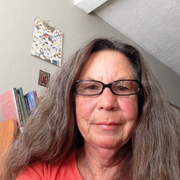
– Benay Blend earned her doctorate in American Studies from the University of New Mexico. Her scholarly works include Douglas Vakoch and Sam Mickey, Eds. (2017), “’Neither Homeland Nor Exile are Words’: ‘Situated Knowledge’ in the Works of Palestinian and Native American Writers”. She contributed this article to The Palestine Chronicle.



